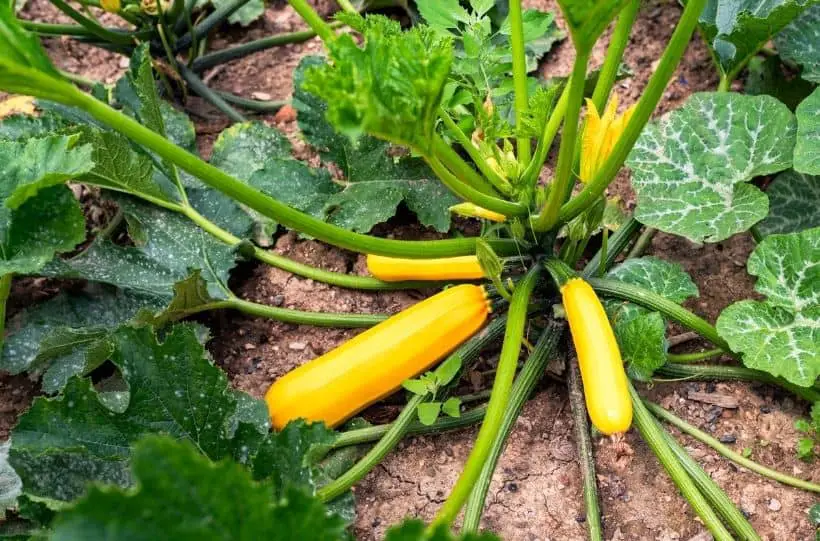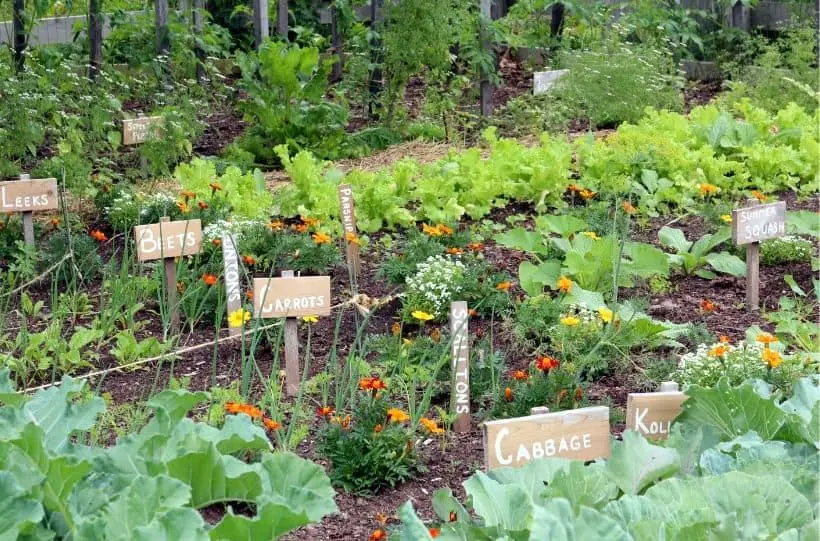How to Grow Summer Squash
Summer squash is a great vegetable to grow in your garden. It is easy to grow and the plants are prolific producers, making it a great way to produce a lot of food for your family.
Growing your own summer squash is easy and will often thrive even when forgotten. Read on to find out how to grow summer squash so you can enjoy this tasty veggie all season long!
What is Summer Squash?
Summer squash is a squash that is eaten before the rind and seeds harden. These are plants that are ready to enjoy sooner than other varieties allowing you to enjoy them over the summer months.
These include a wide variety of common garden favorites including zucchini and patty-pan squash.

What are The Best Varieties of Summer Squash?
Zucchini is one of the most popular summer squash options for your garden. This summer squash is wonderful at growing and tends to thrive even if forgotten. Try an interesting variety like black beauty, green tiger, or yellow zebra zucchini for a great variety of flavors and colors for your table.
Pattypan squash is a fun option for your summer garden. This summer squash can be used in many ways offering a nutrition-packed vegetable that pairs amazingly well with cheese.
Crookneck squash is a great summer squash to grow in your garden. Try a variety like early summer or superset for a wonderful harvest. This is a great addition to your table.
Round or novel squash is a fun switch that can spice things up. There are several great summer squash varieties that are similar to zucchini but hold a shape more like a small pumpkin. These are a fun addition to your garden and your table over the summer.
Try Golden egg or Ronde de Nice varieties and be sure to leave some extra space for these in the garden as the plants tend to get much larger.
Scallop squash is a wonderful option for adding an interesting variety to your garden. These decorative squares are great for drawing attention at a farm stand and can be used in the same way as other squash.
There are also lots of other summer squashes that are worth a mention. These include:
- Fortune
- Loofah
- Sunburst
- Zephyr
How to Grow Summer Squash
Summer squash tends to be a prolific grower that doesn’t need a lot of extra attention to thrive. In fact, favorites like zucchini will produce plenty of fruit for your table even if you forget about it, and just let it grow wild in the garden.
Avoid growing your summer squash varieties too close to each other or growing them with melons, cucumbers, or winter squash. This is important if you plan on saving seeds for later use as not only can the flavor of these change with cross-pollination the end result of saved seeds can be a bit of a wild card.
Before planting your summer squash you should add plenty of fresh compost to help give your plants the nutrition they need to thrive. Make sure your soil is well-draining, and maintains moisture and nutrition well. Add organic matter to clay or sandy soils.
While your summer squash can thrive when directly sown into the garden you can also make the most of your gardening season by starting your summer squash plants indoors 4 to 6 weeks before the last frost. For the best results, you want to keep your seedlings above 70 degrees to assist with germination and early growth.
Start your summer squash with 2 seeds per seed starting container or hole in your garden. After true leaves have formed thin to only one plant each ensure that your summer squash has plenty of room to grow.
Plant your summer squash at least 2 feet apart to give the plants plenty of room to spread out. Despite being more of a bush plant than a vine plant most summer squash varieties do grow quite large.
Summer squash plants are very heavy feeders. In addition to adding in the compost when you plant your squash, you want to fertilize often to help ensure that the soil has enough nutrition for your plants to grow and thrive.
If your summer squash is not receiving enough nutrition in your garden you will find that you may have issues with blossom end rot. Testing your soil acidity can help you determine what needs to be done to balance your soil if you see blossom end rot appear.
Mulch your summer squash and use the deep watering method if you do not get a lot of rain to make sure these heavy feeders have what they need to thrive. Keeping your squash well-watered is essential to helping produce larger fruits that can provide your family with more food.
Dealing with Pests and Your Summer Squash
Summer squash plants tend to have issues with squash bugs and squash vine borers. While your plants are young you can use floating row covers to help prevent squash bug eggs from being laid.

Companion planting should help reduce the likelihood of an infestation of these pests. Radishes, marigolds, and nasturtiums all make an amazing addition to your garden for companion planting near your summer squash to help keep pests at bay.
Marigolds and nasturtiums also help to attract pollinators to your garden which will increase your squash plants’ yield.
Harvesting and Using Summer Squash
You can eat summer squash as soon as the skin turns glossy. This is a simple way to tell if your plants are ripe but it does not indicate that you have to harvest.
The longer you allow your summer squash to grow the larger the fruits will get. This is why when gardeners forget about zucchini they come back to a very large harvest.
Summer squash is a great substitute for noodles and can be used for things like sweetbreads. While most people think about zucchini for these things any variety of summer squash will work well.
Storing summer squash can be a bit tricky as they tend to go bad quickly so you need to freeze it to cook later.
And if you love squash, be sure to check out all our other guides about squash, or start with a few of these:
